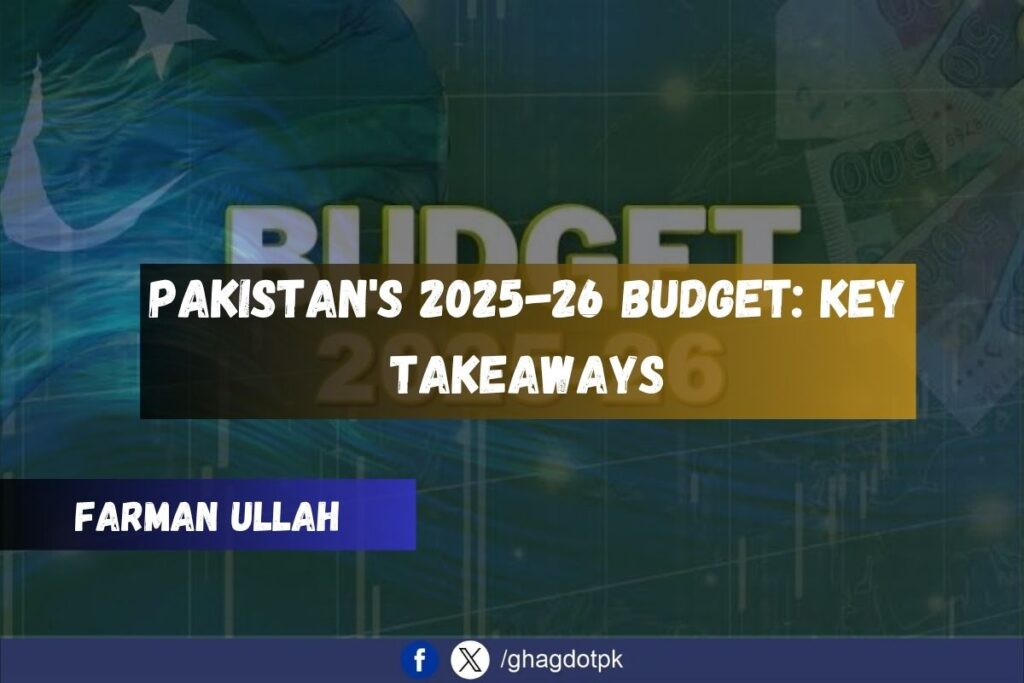By Farman Ullah
The federal government has unveiled a budget of Rs17.573 trillion for the fiscal year 2026 (FY26), with ambitious growth targets. This budget comes after the Economic Survey presented a dismal picture of the economy, missing all targets for the third consecutive year. Despite the challenges, the government is optimistic about achieving a growth rate of 4.2%, a significant increase from the current 2.7%. The budget proposes a cut in overall spending and relies heavily on tightening tax measures to meet its revenue targets. Inflation is estimated at 7.5%, and the government aims to balance this with increased take-home income.
Economic Growth and Inflation: A Delicate Balance
The government’s growth target of 4.2% is ambitious, considering the current economic scenario. To achieve this, the budget focuses on increasing revenue generation and reducing expenditure. The estimated inflation rate of 7.5% is a challenge, but the government plans to offset this by increasing salaries and pensions. A 10% raise in salaries for grade 1-20 employees and a 7% hike in pensions are expected to boost consumer spending and economic activity. Additionally, the government promises to reduce income tax slabs, aiming to balance inflation and take-home income. This move is expected to increase disposable income and stimulate economic growth.
Budget Allocation: Prioritizing Key Sectors
The budget allocation reveals the government’s priorities. Debt servicing takes the largest share, with Rs8.207 trillion allocated for this purpose. Defence receives a significant allocation of Rs2,550 billion, a 20% increase from the previous year. Other key sectors, including civil administration, pensions, and power, also receive substantial allocations. The government aims to improve the business environment and attract investment by allocating funds to these sectors. The allocation for civil administration is Rs0.97 trillion, while pensions receive Rs1.06 trillion. The power and other sectors receive Rs1.19 trillion.
Revenue Generation: A Multi-Pronged Approach
The government has adopted a multi-pronged approach to revenue generation. The tax collection target is set at Rs14,131 billion, an 8.95% increase from the previous year. The government expects significant revenue from external cash flows, estimated at $71 billion. This includes $7 billion in taxes, $8 billion in royalties, and $5 billion from Reko Diq. The privatization of PIA and the Roosevelt Hotel in New York is also expected to generate revenue. Additionally, the government aims to boost IT exports, with a target of $25 billion over the next five years. Remittances are expected to reach $32 billion.
Taxation and Revenue Collection: A Focus on Non-Filers
The government has identified 390,000 high-value non-filers of tax and recovered Rs300 million from them. The revenue machinery has posted a 100% increase in the number of tax filers, generating Rs105 billion in revenue. The government aims to broaden the tax base and increase revenue collection. The focus on non-filers is expected to generate additional revenue and improve tax compliance. The government plans to continue its efforts to increase tax filers and reduce tax evasion.
Challenges and Expectations: A Path to Economic Stability
The budget outlines the government’s vision for economic stability and growth. Despite the challenges, the government is optimistic about achieving its targets. A surplus in the current account, stability of the rupee, and positive ratings from Moody’s and Fitch are expected to boost the economy. The government aims to reduce poverty and improve living standards through its budgetary policies. The success of the budget depends on the effective implementation of these policies and the government’s ability to address the economic challenges.






